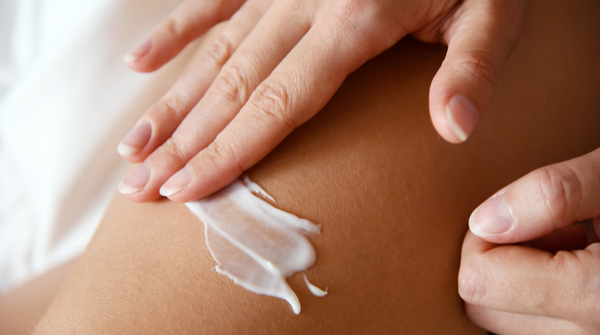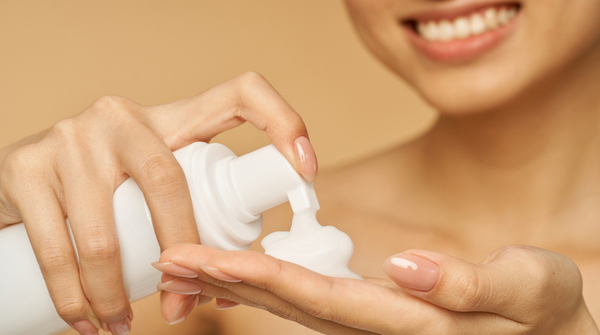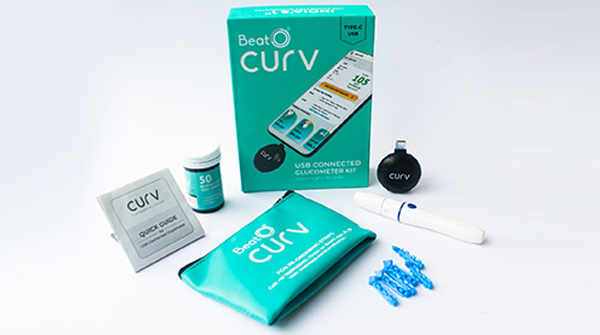Most people with diabetes or pre-diabetes experience persistent skin problems or develop skin illnesses at some point in their lives. Changes in the skin can be an indicator of the onset of diabetes. Moreover, it can mean that your insulin dosage needs to be altered if you already have diabetes. Read on to learn about diabetes skin care.

What Causes Skin Problems in People with Diabetes?
Diabetes-related skin problems affect more than 75% of the world’s population. It has the potential to cause new skin problems as well as worsen existing ones.
Diabetes leads to poor blood circulation in the body; thus, the blood vessels and nerves do not get enough blood and nutrients. As a result, white blood cells lose their ability to fight infections.
Reduced blood circulation hampers the skin’s healing capacity and damages skin collagen, stripping it of its strength. Furthermore, skin cells that have been damaged lose their capacity to function properly, and the skin becomes more sensitive to temperature and pressure.

Know the Changes in Your Skin
The good news is that with a little awareness, you may diagnose skin problems early on and protect your body from further damage because of the condition.
The following are some of the most common skin disorders seen in people with diabetes:
Dry, irritated, red, and itchy skin
Increased blood sugar causes the body to drain fluid from skin cells in order to create urine, which in turn makes the skin dry and cracked.
Diabetic neuropathy, or damage to nerve endings, is another reason for dry skin, particularly in the legs and feet.
Dry skin becomes itchy, and scratching causes skin cracks, allowing infectious materials to enter the skin and cause inflammation, redness, and irritation.
Fungal infections
Anyone can get a fungus infection, but people with diabetes are more prone to it. A red, itchy rash with blisters and scales arises on the folds and warm parts of the body, such as between the toes, the elbow or armpits, the corners of the lips, and so on.
The common fungal infections that occur in diabetics are ringworm, athlete’s foot, and recurring vaginal yeast infection.
Bacterial infections
Bacterial infections are more common among people with diabetes than in the general population. They are prone to boils, folliculitis, styes on the eyelids, and infections around the nails.
Diabetic ulcers
High blood glucose levels harm nerves and make it difficult for the body to recognise and heal wounds. Open wounds and sores, particularly on foot, take a long time to heal and may go unnoticed.
Read More: Diabetes and Women | Prevention and Care
Diabetes Skin Care
Itching, infections, and changes in the skin, such as thickening, are all common skin concerns that can affect anyone. However, people with diabetes are more prone to skin issues, particularly infections.
High glucose levels in the blood harm the ability of our defence cells to fight infections. Both bacterial and fungal skin infections are much more challenging to treat in diabetics.
Bacteria and fungus thrive in high blood sugar environments, especially yeast infections.
However, just because you have diabetes doesn’t mean your skin has to suffer. Use these tips to keep your skin healthy.

Opt for Gentle Cleansers
Harsh soaps can be drying and irritating to delicate skin. Mild shampoos or soaps are recommended for people with diabetes because they don’t irritate the skin. Avoiding alcoholic products and opting for unscented ones is suggested.
If you have type 2 diabetes, avoid skincare products that contain alpha-hydroxy acid or retinoids, as these compounds can be too harsh on your skin. Gentle cleansers can also help keep your skin’s natural oils from being taken away, which keeps it moisturized.
Moisturize Daily
Itching and thickness of the skin can be avoided by keeping your skin moisturized. Preventing cracks and ulcers in the skin, especially if you have neuropathy, is an important element of type 2 diabetes skin care. This is because bacteria and other germs can enter through cracks, causing an illness.
As soon as you come out of the bath or shower, slather on a rich, thick moisturizing lotion or ointment. Moreover, in winters, make sure to moisturize more frequently to keep your skin from drying out. However, avoid using lotion between your toes because it can cause a fungal infection.
Prevent Sweaty Skin
Infections thrive in places where the skin folds and becomes warm and wet, such as the armpits and under the breasts. Candida albicans is the most frequent fungus that infects diabetic patients. It can result in itchy red areas.
They multiply in warm, moist environments like skin folds, which are common in obese people. Maintain a dry environment in these sensitive areas to avoid fungal growth.
Treat Injuries As Soon As Possible
When you have diabetes, a simple cut isn’t so simple, so make sure to treat any injury, no matter how little, right away. Cleaning the wound with water and a gentle cleanser is the first step. Then, to aid healing and avoid infection, use over-the-counter bacitracin ointment and cover it with a bandage.
Consult your dermatologist if the wound does not heal or turns warm, red, or sensitive. An open cut, especially on the foot, can lead to cellulitis, which is a more serious infection.

Control Your Blood Sugar
Good diabetes care with proper blood sugar control through diet, exercise, and medication is the best strategy to maintain healthy skin and lower the risk of other diabetic issues.
The body’s own defence mechanisms can perform more effectively in treating infections when blood sugar levels are under control.
Read More: Understanding Diabetes and Periods
See Your Doctor
It’s not a good idea to mess with your skin issues. If you notice anything strange on your skin or notice any signs of infection, seek medical advice from your dermatologist or primary care physician.




